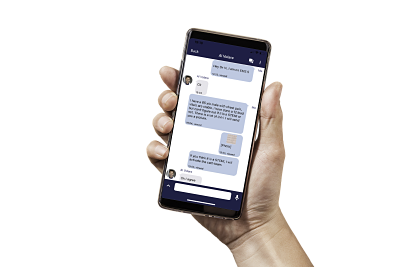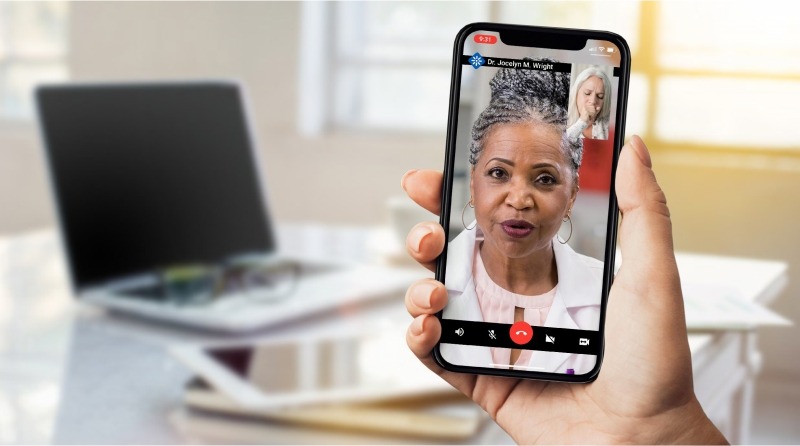DrFirst – Providing Innovative Telemedicine Solutions
Telehealth has been a critical, though underused, element of the healthcare ecosystem for decades, championed by early adopters, including the National Aeronautics and Space Administration, since the late 1960s. However, when news of a pandemic began to hit the international headlines in early 2020, the stage was set for telehealth to finally fulfill its predicted potential as health systems worldwide struggled to meet new demands on capacity.
What makes Backline so valuable in any healthcare setting is that it is a robust and comprehensive care collaboration platform, not simply a telehealth solution
Linda Fischer, SVP, Product Strategy
Suddenly, healthcare institutions and regulatory bodies were compelled to look for technological solutions to enable healthcare access while reducing exposure to the novel coronavirus. As a result, virtual care and remote monitoring are in the spotlight today more than ever before. “Telemedicine is being recognized today for helping control the spread of the pandemic by keeping people out of the hospital when possible while allowing them to receive the care and treatment that they needed,” says Linda Fischer, SVP, Product Strategy, DrFirst. Both the Centers for Disease Control and the World Health Organization advocated for telemedicine as a means to care for patients while reducing the risks of spreading the virus by going to hospitals and doctors’ offices.
We spent many years working to build a footprint in the ‘triangle of care,’ which represents doctors, pharmacies, and hospitals
G. Cameron Deemer, President
In the months before the pandemic’s first documented case in China, a health technology company in Rockville, Maryland, was preparing to add telehealth as a natural evolution to its award-winning care collaboration platform, Backline. “Of course, we had no idea that this pandemic was about to thrust telehealth, and Backline, onto center stage,” says G. Cameron Deemer, President, DrFirst.
Founded in 2000 by James Chen, a seasoned entrepreneur who helped establish VPN technology, DrFirst’s vision was to provide high-quality, sophisticated, and affordable tools to doctors. “We spent many years working to build a footprint in the ‘triangle of care,’ which represents doctors, pharmacies, and hospitals,” says Deemer. Since joining the company in 2004, Deemer has played a crucial role in formalizing and driving improved business processes while developing new technology strategies to leverage the benefits of e-prescribing and other DrFirst platforms and services for providers, hospitals, payers, and other healthcare stakeholders. “We decided to take a horizontal approach to the healthcare space, creating a thin, connected layer through all the stakeholders that tied them all to the points of patient encounters,” he explains.
This horizontal approach led DrFirst to introduce the “Healthiverse” in 2020, to mark its 20th anniversary. “We coined the term ‘Healthiverse’ to represent all those interested players who are eager to contribute to good outcomes for patients. And we see our mission as continuing to ‘Unite the Healthiverse’ by creating true, grassroots access to information and workflows in order to break down the walls that hinder efficient collaboration,” Deemer adds.
Telehealth as Part of Care Collaboration
Adding telehealth to the Backline platform, rather than developing a separate solution, made sense to DrFirst because it sees telehealth as one aspect of care collaboration. “What makes Backline so valuable in any healthcare setting is that it is a robust and comprehensive care collaboration platform, not simply a telehealth solution,” says Fischer, who spent over 20 years as a CIO for a hospital in New York.
Developed with the needs of healthcare providers at its core, Backline is a four-in-one solution that provides HIPAA-compliant secure communications for telehealth, messages, clinical communications, and e-prescribing. This ability to connect anyone, including patients, coupled with its ability to be implemented quickly by facilities of any size and any number of users, allows Backline to enable what DrFirst calls “healthcare without walls.”

Deemer explains that “Backline allows healthcare providers to extend their care beyond the walls of a hospital, doctor’s office, or clinic, to anywhere the patient is.” Backline also enables e-forms and e-signatures to complete and manage forms, which often is an invisible but essential part of care delivery, according to Fischer. Additionally, Backline doesn’t require patients to download the app or undergo a cumbersome registration process.
“We are seeing Backline for telehealth being used in just about any setting you can think of,” says Fischer. This includes the Town of Hempstead in Long Island, New York, which adopted it for its emergency medical services. Using Backline’s secure telehealth connections, paramedics and EMTs can conduct their initial assessments of patients, then consult with a physician in real-time to discuss next steps, which may include treating and discharging patients without needing to transport them to a hospital emergency department.
A hospital in Maryland is also using Backline in new ways. In addition to enabling telehealth visits with its ambulatory patients, the hospital is using it to connect hospitalized patients with their families who can’t visit them during the pandemic. “If a patient doesn’t have access to their cell phone, we can provide a tablet and set up a video chat using Backline so their loved ones at home can see them, and even talk to the nurses or doctors in the room,” says Jackie Rice, VP and CIO at Frederick Health. “We’ve had families at home gather around their phone so they can all do a video visit with a patient.”
“Backline’s value is also seen by payers,” says Fischer, adding that CareFirst of Maryland is providing grants to small physician practices to cover the cost of the platform, in partnership with MedChi, the Maryland State Medical Society.
The Road Ahead
What sets DrFirst apart is the breadth of its vision to unite the Healthiverse. The company’s value proposition lies in enabling the flow of information to empower collaboration among the patient care team. To connect all these different stakeholders, DrFirst has put in place a “highly motivated and diverse team that listens to our customers and closely monitors industry trends and requirements to keep up with the ever-changing healthcare landscape,” according to Deemer.


The COVID-19 pandemic clearly has changed the way telehealth will be used going forward. As it charts its path ahead, DrFirst sees telehealth as one element of its overall goal to connect everyone in the Healthiverse to each other and to the clinical information they need, when and where they need it. This includes all types of healthcare-related communication, notes Deemer. “For patients, it means they can know what their co-pay is before going to the pharmacy or scheduling a medical procedure. It also means they can keep all their digital health records in one place and share them with family members who may help take care of them. For pharmacists, it means they can easily ask physicians questions using secure text, so healthcare providers don’t waste time trading voicemail messages. And for clinicians, it means being able to e-prescribe and confer with other providers wherever they are,” he explains.
For DrFirst, this is all part of helping medical teams be more effective by assisting physicians and other healthcare providers improve patient care through timely collaboration, medication management, price transparency, and adherence to treatment plans, resulting in healthier and more engaged patients.



